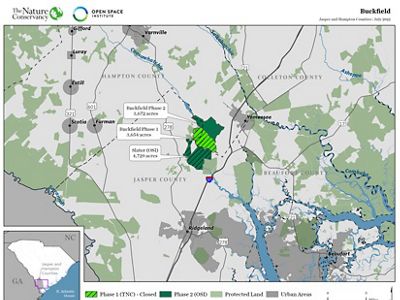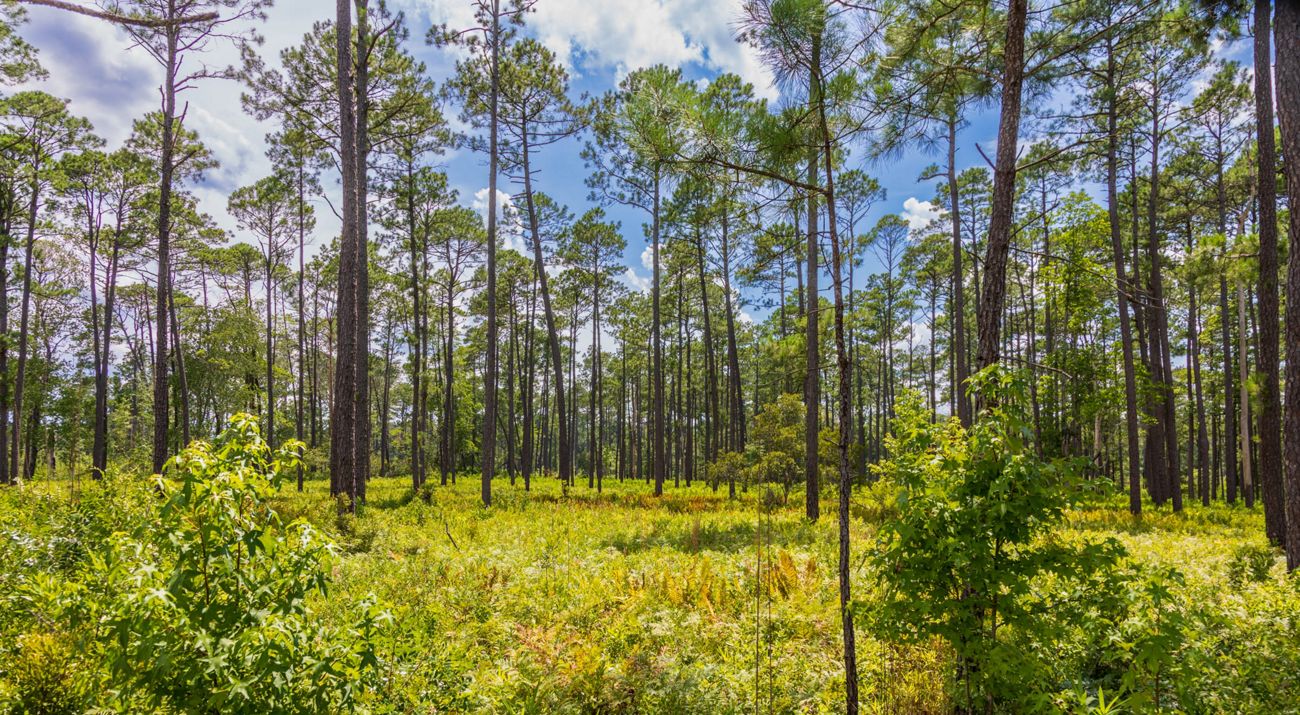TNC and OSI Expand Coosawhatchie River Conservation Efforts
New acquisition creates a 12,000-acre stretch of protected land in coastal South Carolina.
Media Contacts
-
Jennifer Howard
Steward Terra Communications
Phone: (843) 709-4192
Email: jen@stewardterra.com -
Cara Chancellor
The Nature Conservancy
Phone: (772) 532-9178
Email: cchancellor@tnc.org -
Maria Whitehead
Open Space Institute
Phone: (843) 367-2080
Email: mwhitehead@osiny.org
The Nature Conservancy (TNC) and the Open Space Institute (OSI) announced a joint, two-phase effort to permanently protect more than 7,300 acres in Coastal South Carolina’s Hampton and Jasper counties. The protection of the property, known locally as “Buckfield,” will link ecologically significant landscapes, creating a 12,000-acre stretch of protected land in this fast-growing region, and make way for publicly accessible recreation land in the near future.
On June 30, TNC acquired 3,654 acres, marking a bold first step in the permanent protection of Buckfield.
“Buckfield’s enormous size, extensive river frontage and healthy longleaf pine forests have long made it a property of interest for conservation in county comprehensive plans and by the conservation community,” says Dale Threatt-Taylor, TNC's executive director in South Carolina. “We’re thrilled to be joining OSI in this significant conservation achievement and to be opening these lands to the people of South Carolina in the near future.”

OSI intends to acquire the remaining 3,672 acres later this year. The entire Buckfield property (parts I and II), along with the adjacent 5,000-acre Slater property secured by OSI last year, is expected to be transferred to the South Carolina Department of Natural Resources (SCDNR) to become an approximately 12,000-acre WMA. The land will be open for public access.
“The conservation of Buckfield in this vulnerable region is a momentous achievement on its own. When combined with Slater, these 12,000 acres offer largescale connectivity and limitless public recreation opportunities,” said Nate Berry, OSI’s senior vice president. “This is an unparalleled triumph for the people and wildlife of this region."
Buckfield is an ecological treasure with upland longleaf pine forests providing habitat for rare gopher tortoise populations, 36 miles of river frontage on the Coosawhatchie River and Tulifinny River, and many braided streams. This immense watershed drains into the Port Royal Sound, providing clean, abundant water for citizens downstream and replenishing the estuaries on which recreational and commercial fisheries depend.
Additionally, the property, along with adjoining protected properties, creates a “nature bridge” of undeveloped land that spans from the 300,000-acre Ashepoo-Combahee-Edisto (ACE) Rivers Basin to the 450,000-acre South Lowcountry-Savannah River (SOLO).
Until recently, the area between the ACE Basin and the SOLO—where Beaufort, Hampton and Jasper counties intersect—had few protected properties and almost no publicly accessible land. It also faces development pressure from the rapidly growing communities of Beaufort, Bluffton and Hilton Head, located less than 20 miles away.
“Buckfield is a huge success and helps fulfill Jasper County’s community vision for the protection of land for public recreation, water quality and economic development," commented Andy Fulghum, Jasper County administrator. “We applaud TNC and OSI for partnering to get this deal done and look forward to working together on future conservation victories.”
In 2021, OSI purchased three properties, known as the Slater assemblage, totaling slightly more than 5,000 acres, in the heart of this unprotected region. The Slater project kickstarted the acquisition of adjacent Buckfield.
The Nature Conservancy is a global conservation organization dedicated to conserving the lands and waters on which all life depends. Guided by science, we create innovative, on-the-ground solutions to our world’s toughest challenges so that nature and people can thrive together. We are tackling climate change, conserving lands, waters and oceans at an unprecedented scale, providing food and water sustainably and helping make cities more resilient. The Nature Conservancy is working to make a lasting difference around the world in 81 countries and territories (40 by direct conservation impact and 41 through partners) through a collaborative approach that engages local communities, governments, the private sector, and other partners. To learn more, visit nature.org or follow @nature_press on X.


